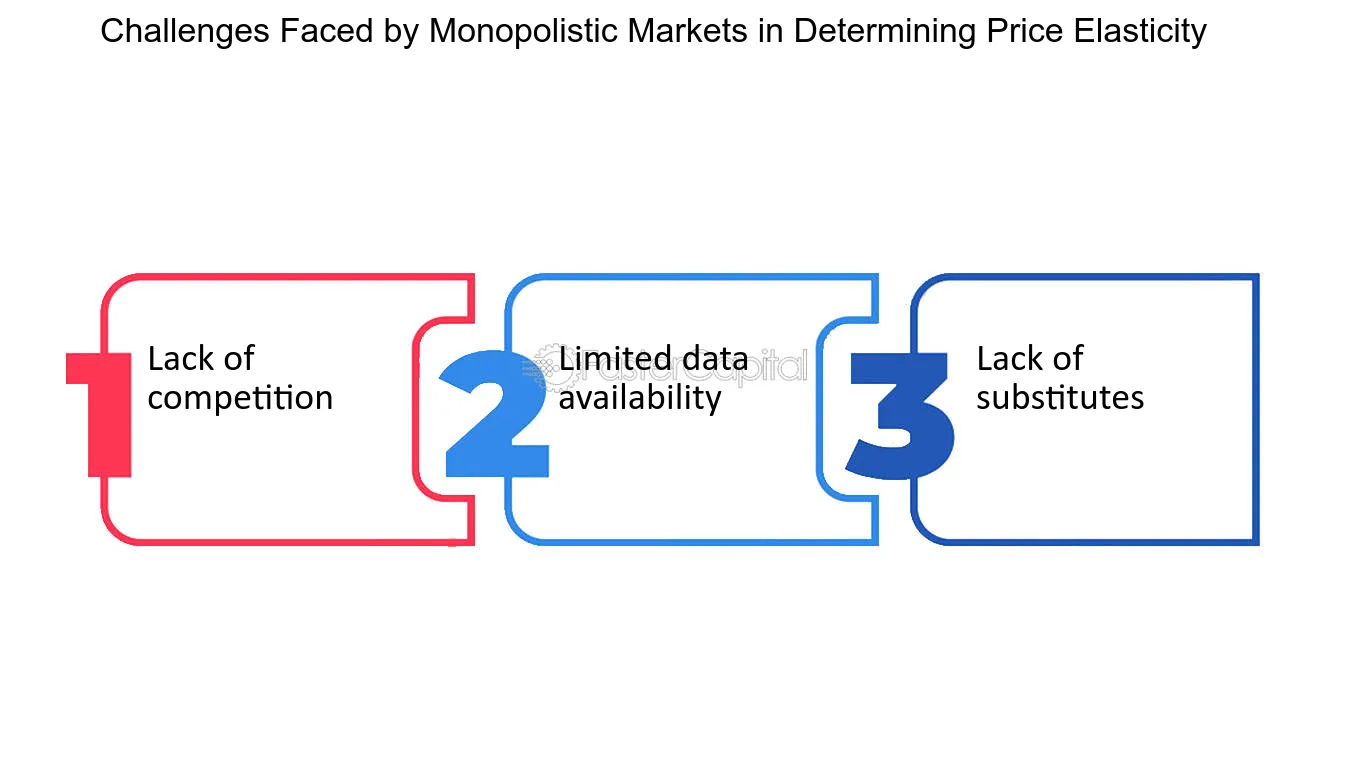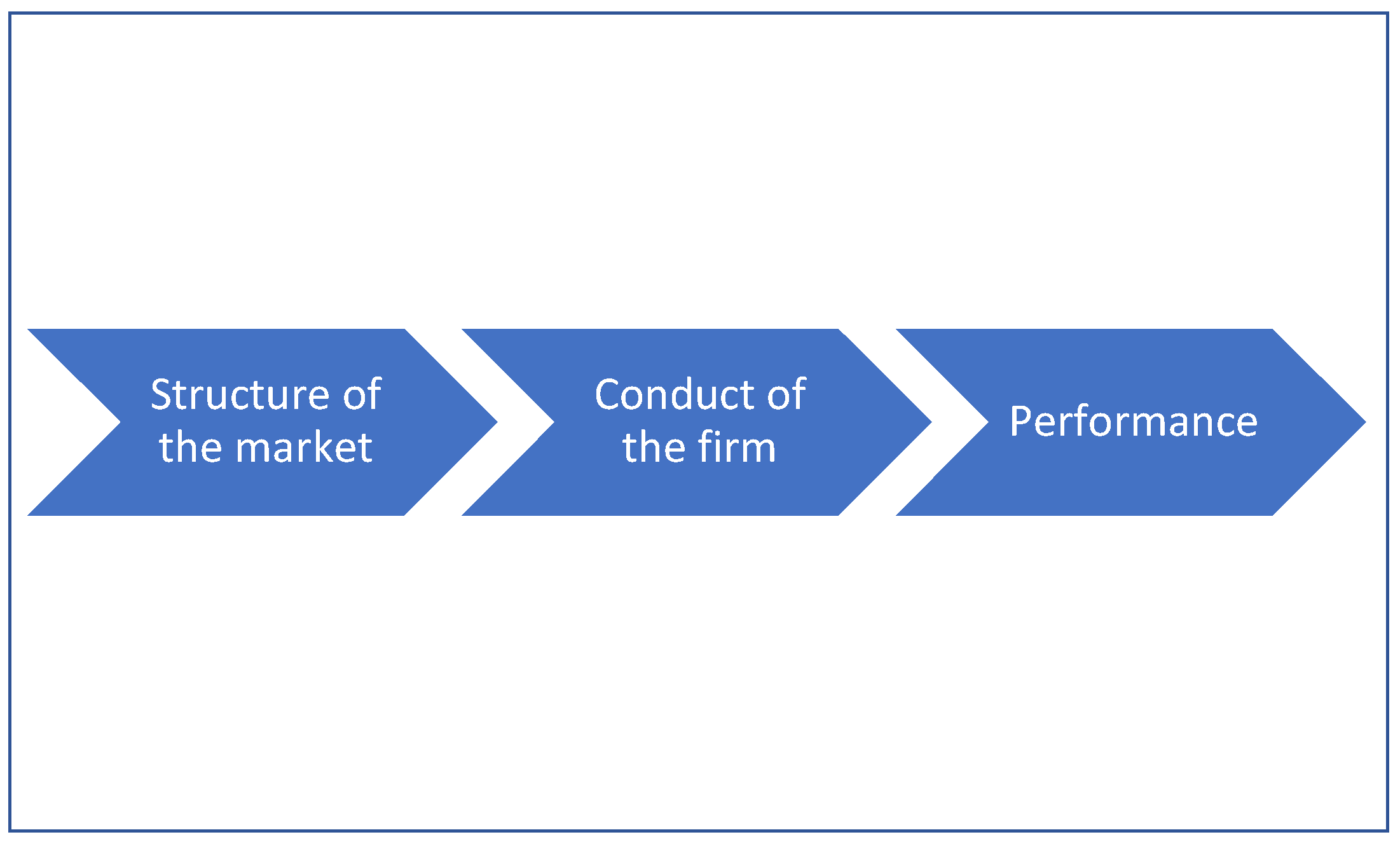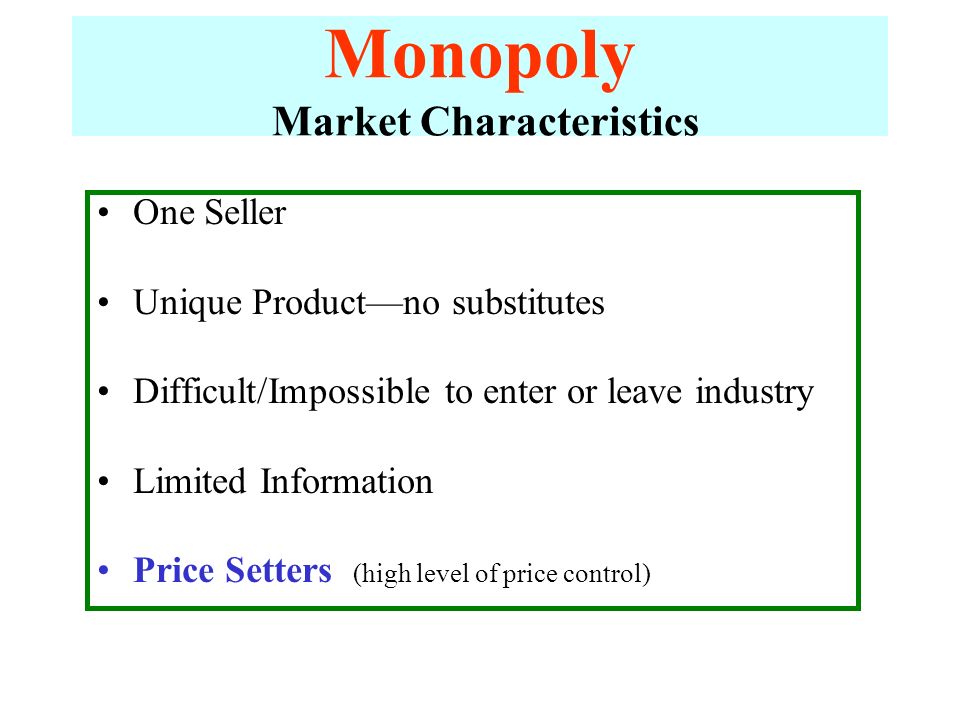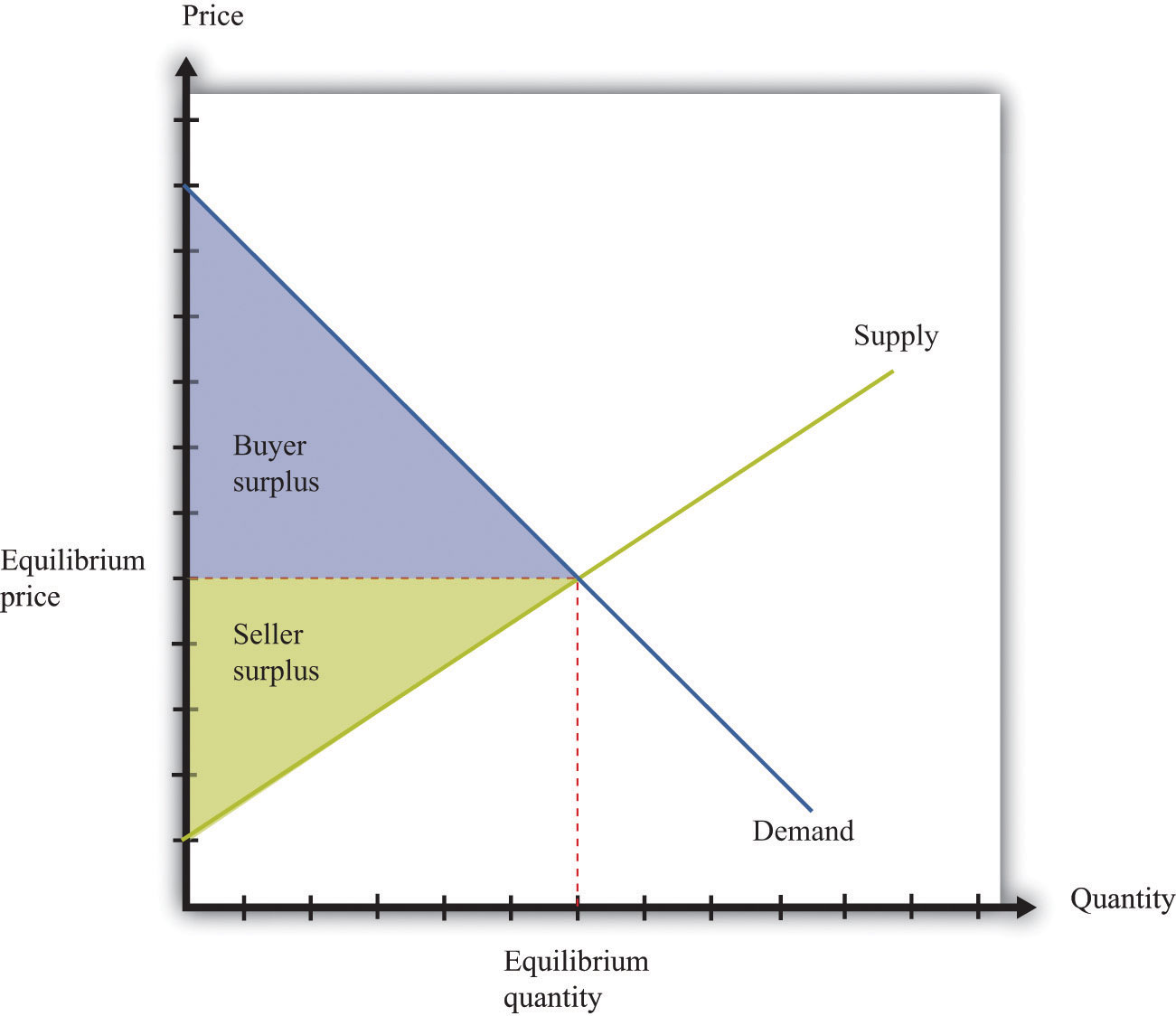Which Best Describes The Availability Of Substitutes In A Monopoly?
Substitutes in Monopoly - Which Best Describes The Availability Of Substitutes In A Monopoly - Explore the Role of Substitutes in Market Dominance.
Author:Gordon DickersonReviewer:Habiba AshtonJan 22, 20245.2K Shares125K Views

In the world of economics, the concept of substitutes plays a pivotal role in determining the market power and behavior of firms. A substitute is a product or service that can be used in place of another to satisfy a similar need or desire. The availability of substitutes is a crucial factor in shaping market dynamics, particularly in monopolistic markets. Which best describes the availability of substitutes in a monopoly?The answer is - Extremely limited or non-existent.
In a monopoly market, there are few to no close substitutes available for the good or service offered by the single dominant firm. This lack of competition allows the monopolist to exert significant control over the market, setting prices and influencing market conditions without facing significant pressure from alternative options. Consumers in a monopoly market are often left with little choice but to purchase the monopolized good or service, regardless of their preferences or dissatisfaction.
Limited Availability Of Substitutes In A Monopoly
Monopolies, by their very nature, are characterized by having limited or even non-existent substitutes for the goods or services they offer. This lack of competition is a defining feature of a monopoly and allows the single dominant firm to exercise significant control over the market.
Here are some key points to understand the limited availability of substitutes in a monopoly:
1. Lack of close alternatives -Consumers have few or no viable options for acquiring similar goods or services outside of the monopoly. This reduces their bargaining power and increases their dependence on the monopolist.
2. Monopolistic control -The absence of competition empowers the monopolist to dictate prices and influence market conditions. This can result in higher prices and lower quality compared to a competitive market.
3. Limited consumer choice -Consumers have limited freedom to choose between competing products or services, potentially leading to a reduction in consumer welfare.
4. Negative impacts -This lack of substitutes can have several detrimental effects, including reduced innovation, stifled economic growth, and potential exploitation of consumers.
Here are some examples that illustrate the limited availability of substitutes in monopolies:
- A single water utility company in a town -Consumers have no alternative for obtaining clean water and are forced to rely on the monopoly provider, regardless of the price or service quality.
- A pharmaceutical company with a patent on a life-saving drug -Patients have no choice but to purchase the expensive medication, even if they cannot afford it, due to the absence of alternative treatment options.
- A company with exclusive rights to operate a toll bridge -Travelers have no alternative route and must pay the toll fee set by the monopoly, even if they find it excessive.
The limited availability of substitutes is a defining characteristic of a monopoly and plays a crucial role in its market power and potential negative impacts. Understanding this concept is essential for analyzing the efficiency and fairness of monopoly markets and for implementing effective regulatory measures to protect consumer welfare.
The Role Of Substitutes In Market Structure Analysis
Substitutes play a critical role in market structure analysis by influencing the level of competition and potential profitability within an industry.
Here's how substitutes are analyzed in different market structures:
1. Perfect Competition
Numerous substitutes-Close substitutes are readily available, limiting the ability of any single firm to exert significant control over the market. This results in competitive pricing and efficient resource allocation.
2. Monopoly
Limited or non-existent substitutes -The lack of close alternatives grants the monopolist significant market power, allowing them to set prices above marginal cost and earn economic profits.
3. Monopolistic Competition
Some close substitutes -Similar but differentiated products exist, leading to some degree of competition and price flexibility. However, firms still have some market power due to product differentiation.
4. Oligopoly
Varying degrees of substitutes -The degree of substitutability depends on the industry and the nature of the products offered. If close substitutes exist, firms may engage in more competitive pricing and behavior. Conversely, with limited substitutes, collusive practices become more likely.
Key Factors To Consider When Analyzing Substitutes
- Closeness of substitutes -How similar are the substitute products in terms of their function, quality, and price?
- Ease of switching -How easy is it for consumers to switch to alternative products?
- Cross-price elasticity of demand -How responsive is the demand for one good to changes in the price of another?
Impacts Of Substitutes On Market Structure
- Limit market power -Substitutes limit the ability of firms to raise prices and earn excessive profits. This ultimately benefits consumers by ensuring fair prices and encouraging innovation.
- Increase market competition -The presence of substitutes encourages firms to become more efficient and innovative to retain their customers.
- Influence market dynamics -Substitutes can influence industry growth, entry barriers, and the overall profitability of the market.
This information can be used by businesses to develop competitive strategies, by policymakers to assess market fairness, and by consumers to make informed choices.
Unique Products And Limited Substitutes - A Defining Feature Of Monopolies
One of the key features that separates monopolies from other market structures is the uniqueness of their products or services and the limited availability of close substitutes. This characteristic plays a crucial role in shaping the competitive landscape and the overall power dynamics within the monopoly market. Also, watch Monopoly And It's Features.
Uniqueness can manifest in several ways:
1. Patented technology -A monopoly may hold exclusive rights to a patented technology, making the product or service completely unique and unavailable elsewhere.
2. Natural resources -A monopoly might control access to a specific natural resource, giving them exclusive ownership and control over the market for goods derived from that resource.
3. Government-granted licenses -Certain industries may be subject to regulatory restrictions, requiring licenses or permits to operate. This can create a monopoly if only a single firm is granted the license to operate in a specific market.
4. Branding and reputation -A monopoly can build a strong brand and reputation, leading consumers to associate the product or service with superior quality or unique features, even if close substitutes exist.
The limited availability of substitutes reinforces the power dynamics within a monopoly. With few or no alternatives, consumers are forced to rely on the monopolist, even if they perceive the prices to be excessive or the quality to be subpar. This lack of choice gives the monopoly significant control over the market, allowing them to:
- Set prices at a level above marginal cost -Monopolies can exploit their market power by charging prices that exceed the cost of production, resulting in economic profits.
- Restrict output -To maintain high prices, monopolies may deliberately limit production, creating artificial scarcity and further increasing demand.
- Limit innovation -With limited competition, monopolies may have fewer incentives to invest in research and development, leading to slower innovation and technological advancements.
- Reduce consumer welfare -Consumers in a monopoly market face limited choice and potentially higher prices, ultimately reducing their overall welfare.
Understanding the relationship between unique products and limited substitutes is essential for analyzing the behavior and impact of monopolies. This knowledge helps in:
- Identifying potential antitrust concerns -Regulatory authorities can utilize this understanding to identify potential cases of market abuse and implement appropriate antitrust measures to protect consumer welfare.
- Developing effective competition policies -Governments can design competition policies that encourage the development of substitute products and services, thereby promoting market competition and reducing the power of monopolies.
- Informing consumer decision-making -By recognizing the limitations of choice in a monopoly market, consumers can make informed decisions about their purchases and potentially seek alternative solutions, even if they are less ideal.
Impact Of Substitute Availability On Market Power
The availability of substitutes is a crucial factor influencing market power, which refers to the degree of control a firm or group of firms has over the market for a particular good or service.
1. Direct Relationship
Limited Substitutes -When substitutes are scarce or non-existent, firms gain significant market power. This allows them to:
- Set higher prices -With limited alternatives, consumers are less price-sensitive and more likely to accept higher prices, even if they are above marginal cost.
- Limit output -To maintain high prices, firms may restrict production, creating artificial scarcity and further increasing demand.
- Reduce innovation -With less pressure from competitors, firms may have fewer incentives to invest in research and development, leading to slower innovation and technological advancements.
- Earn economic profits -The absence of competition allows firms to earn substantial profits over and above a normal return on investment.
Examples Of Direct Relationship
- Pharmaceutical companies with patented drugs -With exclusive rights to a life-saving drug, the company enjoys substantial market power and can set high prices.
- Public utilities in geographically isolated areas -With no alternative providers, the utility company has significant control over the market and can charge higher prices for water, electricity, or other essential services.
2. Indirect Relationship
Readily Available Substitutes -When close substitutes are readily available, the market power of firms is significantly reduced. This leads to:
- Competitive pricing -Firms are forced to compete with each other by offering lower prices to attract and retain customers.
- Efficient resource allocation -Competition encourages firms to operate efficiently and allocate resources optimally to minimize costs and compete effectively.
- Increased innovation -With pressure from competitors, firms have greater incentives to innovate and develop new products and services to differentiate themselves in the market.
- Improved consumer welfare -Competition benefits consumers by providing wider choice, lower prices, and improved product quality.
Examples Of Indirect Relationship
- The smartphone industry:With numerous manufacturers offering similar products with varying features and prices, the market is highly competitive, leading to constant innovation and lower prices for consumers.
- The grocery retail industry:With several supermarkets competing for customers, the market is characterized by competitive pricing and promotions, offering consumers greater choice and affordability.
3. Factors Influencing The Impact Of Substitutes
- Closeness of substitutes -The degree to which substitutes are comparable in terms of function, quality, and price significantly affects their impact on market power.
- Ease of switching -If consumers can easily switch to substitutes, the market power of firms is further constrained.
- Cross-price elasticity of demand -This measures the sensitivity of demand for one good or service to changes in the price of another substitute. A high cross-price elasticity indicates that substitutes have a significant impact on the market power of firms.
Examples Of Monopolies With Limited Substitutes
1. Natural Monopolies
- Public utilities -Companies providing essential services like water, electricity, and gas often operate as monopolies due to high infrastructure costs and economies of scale. Limited competition in these sectors ensures reliable service delivery, but also raises concerns about potential price gouging and lack of innovation.
- Diamond mining -De Beers, the world's largest diamond producer, controls a significant portion of the global diamond market due to its exclusive access to mines and its control over rough diamond sales. This limited competition allows De Beers to influence diamond prices and maintain its dominant market position.
2. Intellectual Property Monopolies
- Pharmaceutical companies -With patents granted for new life-saving drugs, pharmaceutical companies can enjoy a period of monopoly power during which they can charge high prices to recoup their research and development costs. This limited competition ensures financial incentives for innovation but also raises concerns about affordability and access to essential medicines.
- Software companies -Companies like Microsoft and Adobe hold patents and copyrights on their software, granting them monopoly power in specific software segments. While this allows them to invest in research and development, it also limits consumer choice and can lead to higher prices for software licenses.
3. Technology-based Monopolies
- Social media platforms -Facebook and Google control a significant portion of the online advertising market, giving them substantial market power. This allows them to set high advertising prices and dictate terms to advertisers.
- Operating systems -Microsoft and Apple hold dominant positions in the operating system market for personal computers and smartphones, respectively. This limited competition gives them considerable control over software development and user experience.
4. Geographic Monopolies
- Local businesses in isolated areas -Businesses operating in geographically isolated areas, such as small towns or islands, might lack competition due to the high cost of entry and limited customer base. This can lead to higher prices for consumers due to the absence of alternative options.
- Sports leagues -Major sports leagues in the United States, such as the NFL and MLB, operate as monopolies within their respective sports. This allows them to control broadcasting rights, salaries, and league rules, but also raises concerns about player compensation and competitive balance.
5. Government-granted Monopolies
- Postal services -In many countries, the government grants postal services a monopoly on mail delivery due to the universal service obligation. This ensures reliable delivery of mail services, but also limits competition and innovation in the postal sector.
- Alcohol and tobacco monopolies -Some governments maintain monopolies on the production and sale of alcohol and tobacco to control consumption and generate revenue. This allows for stricter regulations and control over these harmful substances, but also raises concerns about government overreach and limited consumer choice.
FAQ's About Which Best Describes The Availability Of Substitutes In A Monopoly?
What Is The Availability Of Substitute?
The availability of substitutes is one of the major determinant of price elasticity of demand. This is because, higher number of substitutes for a product provides greater number of options to the consumers to switch in case of any price increase or decrease in the given good.
Can Monopolies Have Substitutes?
There are no close substitutes for the good or service a monopoly produces. Not only does a monopoly firm have the market to itself, but it also need not worry about other firms entering. In the case of monopoly, entry by potential rivals is prohibitively difficult.
What Is The Absence Of Substitute Goods In Monopoly?
A monopoly is a structure in which a single supplier produces and sells a given product or service. If there is a single seller in a certain market and there are no close substitutes for the product, then the market structure is that of a "pure monopoly".
Conclusion
In conclusion, the availability of substitutes plays a crucial role in shaping market dynamics and the level of competition within an industry. In a monopoly, the defining characteristic is the limited or non-existent availability of close substitutes. This lack of competition allows monopolies to exert significant control over the market.
It is important to note that while monopolies can have negative impacts on consumers and the economy, they can also play a positive role in certain cases.
Jump to
Limited Availability Of Substitutes In A Monopoly
The Role Of Substitutes In Market Structure Analysis
Unique Products And Limited Substitutes - A Defining Feature Of Monopolies
Impact Of Substitute Availability On Market Power
Examples Of Monopolies With Limited Substitutes
FAQ's About Which Best Describes The Availability Of Substitutes In A Monopoly?
Conclusion

Gordon Dickerson
Author

Habiba Ashton
Reviewer
Latest Articles
Popular Articles



